Transition to Green Energy - Overcoming Obstacles
The shift towards green energy is not just a trend; it's a necessity for a sustainable future. As we face the looming threats of climate change and environmental degradation, transitioning to renewable energy sources has become a priority for governments, businesses, and individuals alike. However, this journey is fraught with challenges that can feel overwhelming. In this article, we will explore these obstacles and discuss practical strategies to overcome them, ultimately promoting sustainable practices that benefit our planet.
Green energy encompasses a variety of renewable sources, including solar, wind, and hydroelectric power. Each of these energy forms has its unique advantages, such as reducing greenhouse gas emissions and decreasing reliance on finite fossil fuels. However, the transition is not as simple as flipping a switch. It involves navigating a complex web of technological, financial, and regulatory challenges that can impede progress. But fear not! By understanding these obstacles and implementing effective solutions, we can pave the way for a greener, more sustainable energy future.
Green energy refers to energy derived from natural sources that replenish themselves more quickly than they are consumed. This includes solar energy harnessed from sunlight, wind energy captured by turbines, and hydroelectric power generated from flowing water. Each of these sources plays a crucial role in reducing our carbon footprint and promoting a cleaner environment. For instance, solar panels can be installed on rooftops, harnessing sunlight to power homes and businesses, while wind farms can generate electricity on a larger scale, providing power to entire communities.
But the benefits of green energy extend beyond just environmental protection. They also include economic advantages such as job creation in the renewable energy sector, energy independence, and the potential for lower energy costs in the long run. It’s like investing in a garden; you put in the effort today, and you’ll reap the rewards tomorrow. However, as we’ll discuss in the following sections, the path to this sustainable future is not without its bumps and hurdles.
Transitioning to green energy presents several challenges that can hinder progress. These include technological barriers, financial constraints, and regulatory hurdles. Each of these challenges affects how quickly we can adopt renewable energy solutions and integrate them into our existing infrastructure.
Innovative technologies are essential for the green energy transition. However, current technologies often face limitations that can slow down progress. For example, while solar panels and wind turbines are becoming more efficient, the need for energy storage solutions remains a significant challenge. Without effective storage, we cannot harness energy when it’s abundant and use it when demand peaks.
Energy storage is crucial for balancing supply and demand in renewable energy. Various technologies, such as batteries and pumped hydro, are being developed to enhance reliability. For instance, advanced battery technologies can store excess solar energy generated during the day for use at night. This ensures a consistent energy supply, regardless of the time of day or weather conditions.
Integrating renewable energy into existing power grids presents significant challenges. Many current grids are not equipped to handle the variable nature of renewable sources. The solution? Smart grids and infrastructure upgrades are essential for managing renewable energy sources effectively. These technologies allow for better communication between energy producers and consumers, optimizing energy distribution and reducing waste.
Financing green energy projects can be daunting due to high initial costs and market volatility. Many renewable energy projects require substantial upfront investments, which can deter potential investors. However, various funding options and government incentives can help alleviate these financial burdens. By leveraging these resources, we can make green energy more accessible and attractive to investors.
Effective policies and regulations are vital for facilitating the transition to green energy. Governments play a crucial role in creating an environment conducive to renewable energy adoption. This includes developing clear policies that support sustainable practices and provide incentives for businesses and individuals to invest in green technologies.
Government incentives, such as tax credits and subsidies, can significantly drive investment in renewable energy technologies. By reducing the financial burden on consumers and businesses, these incentives encourage the adoption of green practices. It's like offering a discount on a gym membership to motivate people to get fit — the initial push can lead to lasting change.
Global collaboration is essential for addressing climate change and promoting green energy. International agreements and partnerships can foster sustainable energy practices worldwide. By working together, countries can share knowledge, resources, and technologies that facilitate the transition to renewable energy.
Raising public awareness and understanding of green energy is critical for its acceptance. Without a well-informed public, the transition to renewable energy can stall. Education and outreach initiatives are necessary to promote sustainable energy solutions and encourage individuals to take action.
Engaging local communities in green energy initiatives can enhance support and participation. Successful community-driven projects, such as solar co-ops or local wind farms, demonstrate the power of collective action. When communities come together to advocate for renewable energy, they create a culture of sustainability that can inspire others to follow suit.
Educational programs focused on renewable energy can empower individuals and organizations. These initiatives can range from workshops on solar panel installation to university courses on sustainable energy technologies. By increasing knowledge and skills related to green energy, we can cultivate a workforce ready to tackle the challenges of the future.
Q: What is green energy?
A: Green energy refers to renewable energy sources that are environmentally friendly, such as solar, wind, and hydroelectric power.
Q: What are the main challenges in transitioning to green energy?
A: Key challenges include technological barriers, financial constraints, and regulatory hurdles.
Q: How can government policies support renewable energy?
A: Government policies can provide incentives, such as tax credits and subsidies, to encourage investment in renewable energy technologies.
Q: Why is public awareness important for green energy?
A: Public awareness is crucial for the acceptance and adoption of renewable energy solutions, driving collective action towards sustainability.
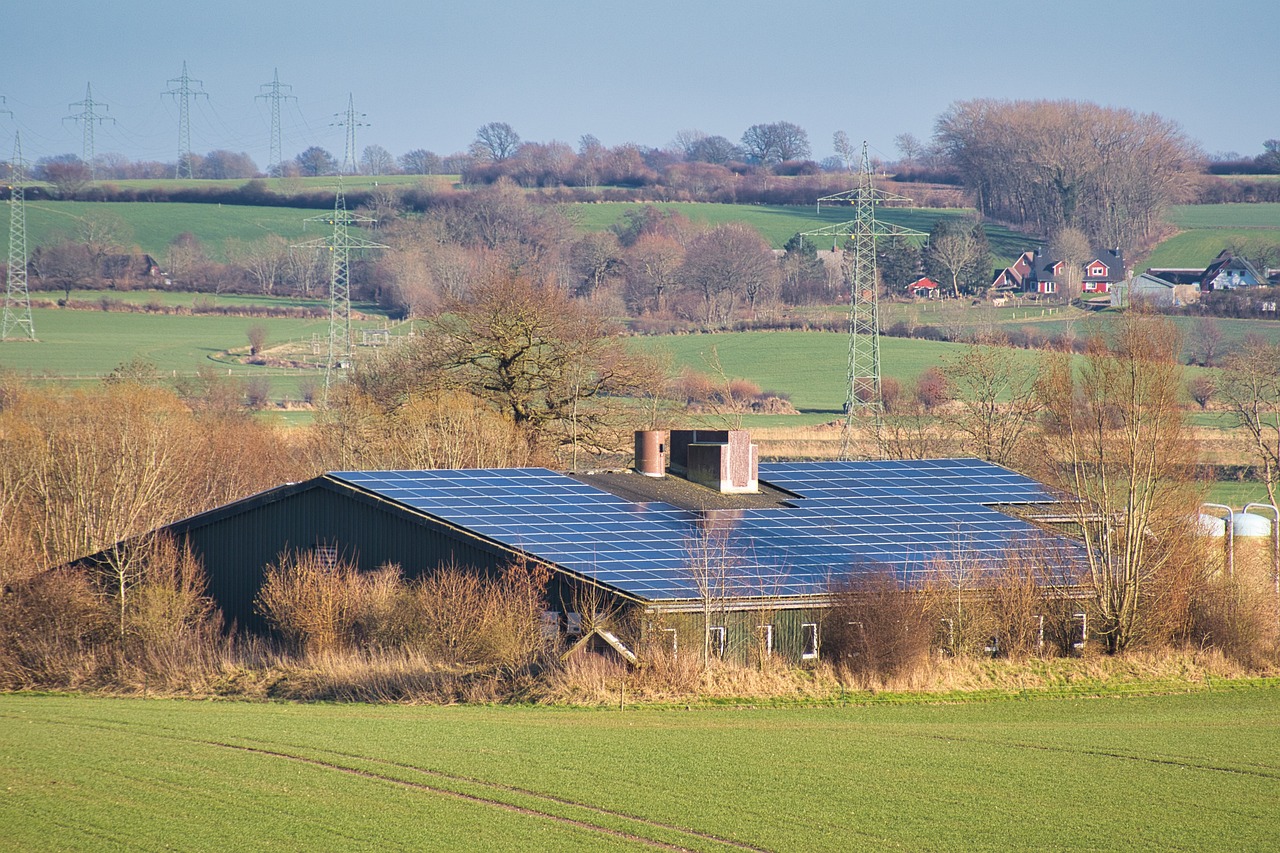
Understanding Green Energy
Green energy is not just a buzzword; it's a vital part of our future. When we talk about green energy, we’re referring to energy that comes from renewable sources that are naturally replenished. Think of it like nature’s own power supply! The most common forms include solar, wind, and hydroelectric power. Each of these sources has its own unique benefits, making them essential players in the quest for a sustainable and cleaner planet.
Let’s break it down a bit. Solar energy harnesses the power of the sun using photovoltaic cells. Imagine capturing sunlight and converting it into electricity—how cool is that? Then we have wind energy, which utilizes wind turbines to convert wind flow into power. It’s like capturing the very breath of the earth! Hydroelectric power, on the other hand, takes advantage of flowing water to generate energy, showcasing the dynamic force of nature. All these forms of green energy not only help in reducing our carbon footprint but also provide a path toward energy independence.
The benefits of transitioning to green energy are manifold. For starters, it significantly reduces greenhouse gas emissions, which is crucial in our fight against climate change. Additionally, renewable energy sources are often more sustainable over the long term compared to fossil fuels, which are finite and polluting. This transition can lead to job creation in new industries and technologies, providing a boost to the economy while fostering innovation.
However, it’s essential to recognize that while the promise of green energy is immense, the transition is not without its challenges. Understanding these various forms of green energy and their potential impacts is the first step in tackling those hurdles. The journey to a sustainable future requires not just technological advancements but also a collective effort from individuals, communities, and governments to embrace these energy sources.
In summary, green energy represents a transformative shift in how we think about power generation. It’s about more than just energy; it’s about creating a sustainable future for generations to come. As we delve deeper into the challenges of this transition, we can lay the groundwork for a healthier planet and a more sustainable way of living.
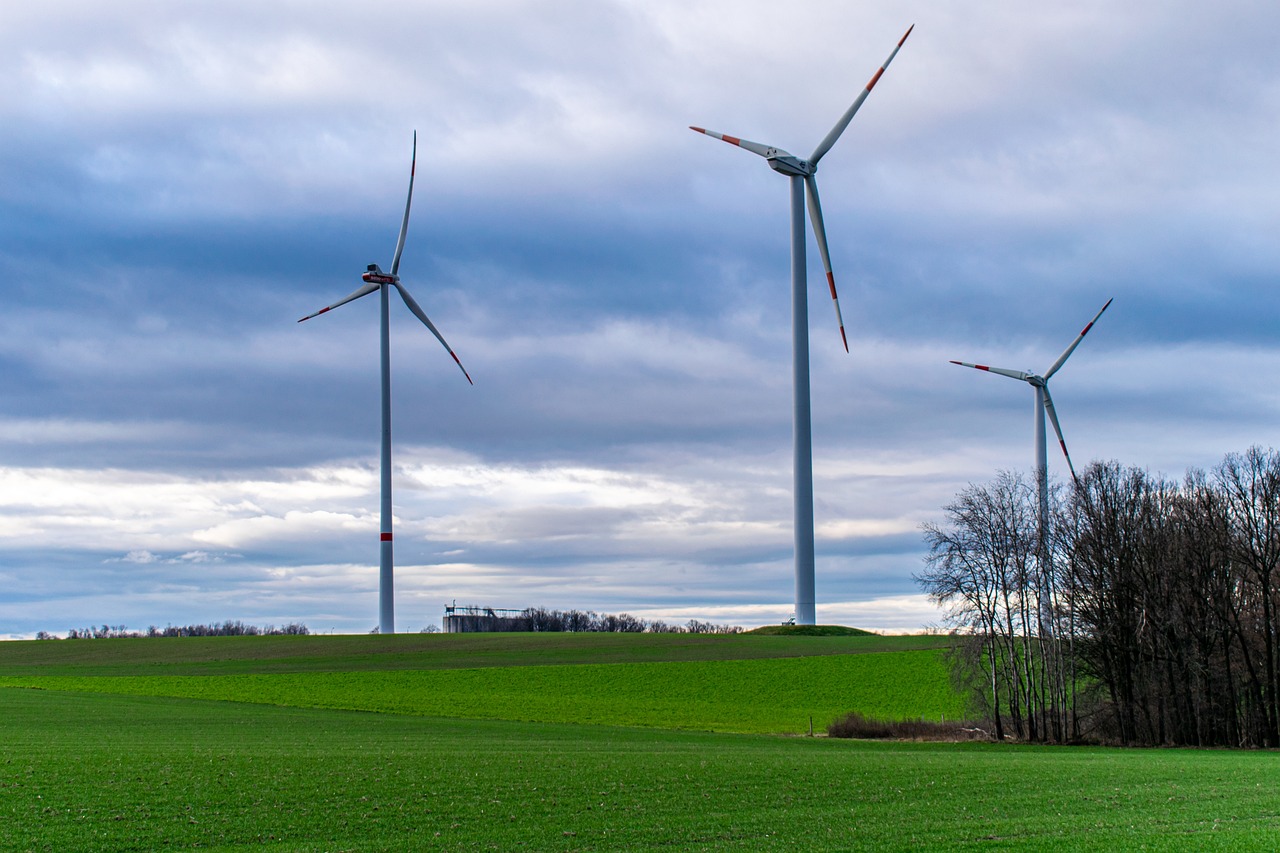
Key Challenges in Transitioning
Transitioning to green energy is not just a walk in the park; it’s more like navigating a complex maze filled with challenges that can seem daunting at times. As we strive to shift from traditional fossil fuels to renewable energy sources, we encounter a series of obstacles that can hinder progress. These challenges can be broadly categorized into three main areas: technological barriers, financial considerations, and policy and regulatory frameworks. Each of these areas presents unique hurdles that require innovative solutions and collaborative efforts to overcome.
First and foremost, let’s talk about technological barriers. The success of the green energy transition heavily relies on the development of cutting-edge technologies. For instance, while solar panels and wind turbines have made significant strides, there are still limitations in energy storage and efficiency. Imagine trying to fill a bucket with water that has holes in it; that’s what we face with current energy storage technologies. We need advancements that can hold onto energy generated from renewable sources until it’s needed, ensuring a steady supply even when the sun isn’t shining or the wind isn’t blowing. This leads us to the importance of exploring various energy storage solutions, such as lithium-ion batteries and pumped hydro storage, which can play a crucial role in balancing supply and demand.
Energy storage is the backbone of a reliable green energy system. Without effective storage solutions, the intermittent nature of renewable energy can lead to supply gaps. Currently, technologies like lithium-ion batteries and pumped hydro storage are at the forefront of the energy storage conversation. These technologies allow us to store excess energy generated during peak production times for use during periods of low production. Here’s a quick comparison of some popular energy storage technologies:
| Technology | Advantages | Disadvantages |
|---|---|---|
| Lithium-ion Batteries | High energy density, fast charging | Costly, limited lifespan |
| Pumped Hydro Storage | Large capacity, long lifespan | Geographically limited, high initial costs |
| Flywheel Energy Storage | Fast response time, durable | Lower energy capacity, high cost |
Next, we have the grid integration issues. Integrating renewable energy into existing power grids is like trying to fit a square peg into a round hole. Our current infrastructure is primarily designed for centralized power generation from fossil fuels, making it challenging to incorporate distributed renewable sources. To tackle this, we need to invest in smart grid technologies that can handle the variability of renewable energy and improve energy management. Upgrading our infrastructure is not just a technical necessity; it’s a crucial step towards a sustainable energy future.
Now, let’s dive into the financial considerations. One of the biggest roadblocks to green energy adoption is the high initial cost of renewable energy projects. Think of it like buying a new car; the upfront cost can be overwhelming, but the long-term savings on fuel and maintenance can make it worthwhile. Financing options such as green bonds, public-private partnerships, and government incentives can help alleviate some of the financial burdens. Additionally, market volatility can create uncertainty for investors, making it essential to establish stable funding mechanisms and incentives to encourage investment in green technologies.
In conclusion, while the transition to green energy is fraught with challenges, it’s important to remember that these obstacles are not insurmountable. By focusing on technological innovation, enhancing financial support, and creating effective policies, we can pave the way for a sustainable energy future. The journey may be long, but the destination—a cleaner, healthier planet—is worth every effort.
- What are the main sources of green energy? The primary sources of green energy include solar, wind, hydroelectric, geothermal, and biomass energy.
- Why is energy storage important for renewable energy? Energy storage is crucial because it allows us to store excess energy produced during peak times for use when production is low, ensuring a consistent energy supply.
- How can governments support the transition to green energy? Governments can support this transition by providing incentives, funding research and development, and creating policies that promote renewable energy adoption.

Technological Barriers
The transition to green energy is not just a matter of flipping a switch; it's akin to navigating a complex maze filled with technological barriers that can often feel overwhelming. One of the most significant hurdles is the limitations of current technologies. While we have made remarkable strides in harnessing renewable energy sources like solar and wind, the technologies that support them are still in a state of evolution. For instance, solar panels have become more efficient over the years, yet they still face challenges in energy conversion rates and durability under extreme weather conditions. Similarly, wind turbines are powerful but require specific geographical conditions to be effective. This inconsistency can lead to a disruption in energy supply, making it difficult to rely solely on these sources without complementary technologies.
Another major barrier is the need for advancements in energy storage and efficiency. Renewable energy sources are inherently intermittent; the sun doesn't always shine, and the wind doesn't always blow. This unpredictability raises the question: how do we store energy for when we need it most? Current energy storage solutions, such as traditional batteries, have limitations in terms of capacity and lifespan. While newer technologies like lithium-ion batteries are gaining traction, they still come with concerns regarding environmental impact and resource availability. Moreover, pumped hydro storage, which has been a reliable method for decades, is geographically restrictive and not feasible everywhere. Thus, the quest for innovative storage solutions is crucial, and it is a race against time to develop technologies that can efficiently store energy for future use.
Moreover, grid integration issues further complicate the landscape. The existing power grids were primarily designed for centralized fossil fuel power generation, making it challenging to integrate decentralized renewable energy sources. The transition to a more sustainable grid requires significant upgrades to the infrastructure, including the implementation of smart grid technologies that can manage the complexities of renewable energy inputs. Smart grids utilize advanced communication technologies to monitor and manage energy flows, ensuring that supply meets demand in real-time. However, the transition to smart grids is not just a technical challenge; it also involves substantial investment and regulatory changes. This means that while the technology exists, the pathway to implementation is fraught with challenges that need to be addressed.
In summary, while the road to green energy is paved with potential, it is also filled with technological barriers that require innovative solutions and collaborative efforts across sectors. The need for advancements in energy storage, efficiency, and grid integration cannot be overstated. As we continue to push the envelope in renewable energy technologies, overcoming these barriers will be essential for a sustainable future.
- What are the main technological barriers to green energy? The primary barriers include limitations in energy storage technologies, the need for more efficient renewable energy systems, and challenges related to integrating these systems into existing power grids.
- How can energy storage solutions improve renewable energy reliability? By effectively storing excess energy generated during peak production times, energy storage solutions can provide power during periods of low generation, ensuring a consistent energy supply.
- What role do smart grids play in the transition to green energy? Smart grids enhance the management of energy distribution, allowing for better integration of renewable sources and improving overall grid reliability and efficiency.

Energy Storage Solutions
When we talk about energy storage, we're diving into one of the most crucial aspects of the green energy transition. Why? Because renewable energy sources like solar and wind are inherently intermittent—they produce energy only when the sun shines or the wind blows. This is where effective energy storage solutions come into play, acting like a safety net that helps balance supply and demand. Imagine trying to fill a bathtub with a hose that only works sporadically; without a way to store the water, you’d be left with an empty tub most of the time. So, let’s explore some of the key technologies that can help us keep that tub full, even when nature plays hard to get.
One of the most popular and rapidly advancing technologies in energy storage is batteries. These aren't just any batteries; we're talking about advanced lithium-ion batteries that power everything from your smartphone to electric vehicles. But the real game-changer is the development of larger-scale battery systems that can store energy from renewable sources for later use. Think of it as a giant power bank for the grid. According to recent studies, the cost of battery storage has fallen dramatically over the past decade, making it more accessible for both commercial and residential applications.
Another fascinating solution is pumped hydro storage. This method uses the gravitational potential energy of water. Picture this: when there's excess energy available, water is pumped from a lower reservoir to a higher one. When energy demand spikes, the water is released back down, driving turbines to generate electricity. It’s like a giant water slide that can turn the thrill of downhill fun into a source of power. However, while pumped hydro is effective, it requires specific geographical conditions, which can limit its implementation.
For those who prefer a more cutting-edge approach, we have flywheels. These devices store energy in the form of kinetic energy by spinning a rotor at high speeds. When energy is needed, the rotor slows down, releasing the stored energy back into the grid. Flywheels are incredibly efficient and can respond almost instantaneously to changes in energy demand. However, they are best suited for short-term storage, making them ideal for balancing out fluctuations rather than long-term energy storage.
Lastly, let’s not forget about thermal energy storage. This approach involves storing energy in the form of heat. For example, excess solar energy can be used to heat a large mass of material (like molten salt), which can then be tapped into later to generate steam and power turbines. It's a bit like cooking a big pot of soup; you can let it simmer all day and enjoy it whenever you’re ready to serve. This method is particularly useful for concentrating solar power plants and can provide energy even after the sun has set.
In summary, energy storage solutions are essential for a reliable and efficient green energy framework. As technology continues to evolve, we can expect to see even more innovative solutions emerging. The future is bright, and with the right storage technologies in place, we can harness the full potential of renewable energy sources to create a sustainable world.
- What are the main types of energy storage solutions? The main types include batteries, pumped hydro storage, flywheels, and thermal energy storage.
- Why is energy storage important for renewable energy? Energy storage helps balance supply and demand, ensuring that energy is available even when renewable sources are not producing.
- How do batteries work in energy storage? Batteries store energy chemically and release it as electrical energy when needed.
- What is pumped hydro storage? It uses excess energy to pump water to a higher elevation, which can then be released to generate electricity when needed.

Grid Integration Issues
Integrating renewable energy sources into the existing power grid is no small feat. Think of it like trying to fit a square peg into a round hole; it requires adjustments, creativity, and sometimes, a complete overhaul. As we embrace the transition to green energy, we face significant challenges in ensuring that these renewable sources, such as solar and wind, can effectively coexist with traditional energy systems. One major issue is the intermittent nature of renewable energy. Unlike fossil fuels, which can provide a constant energy supply, renewables are often reliant on weather conditions. For instance, solar energy is only produced during the day, while wind energy can be unpredictable. This variability can lead to supply and demand mismatches, creating instability in the grid.
To tackle these challenges, the concept of smart grids has emerged as a vital solution. Smart grids utilize advanced technology and communication systems to monitor and manage energy flows in real-time. This allows for better integration of renewable energy sources by balancing supply and demand more effectively. By implementing smart grid technologies, utility companies can enhance the reliability of energy distribution and minimize the risk of outages. However, upgrading to smart grids involves significant investment in infrastructure and technology, which can be a daunting prospect for many regions.
Moreover, infrastructure upgrades are essential for accommodating the influx of renewable energy. Many existing grids were designed decades ago and are not equipped to handle the distributed nature of renewable energy sources. This necessitates the development of new transmission lines, substations, and energy management systems. For example, areas with high solar panel installations may require dedicated lines to transport excess energy generated during sunny days to nearby regions experiencing higher demand. Such upgrades not only improve grid resilience but also facilitate the transition to a more sustainable energy landscape.
In summary, while the integration of renewable energy into existing power grids presents formidable challenges, solutions like smart grids and infrastructure improvements are paving the way for a more sustainable future. The journey toward a fully integrated renewable energy system is complex, but with the right strategies and investments, it’s entirely achievable. As we move forward, we must prioritize these advancements to ensure a stable, reliable, and green energy future.
- What is a smart grid? A smart grid is an electrical grid that uses digital technology to monitor and manage the transport of electricity from all generation sources to meet the varying electricity demands of end users.
- Why do renewable energy sources create integration issues? Renewable energy sources like solar and wind are intermittent, meaning their energy production can fluctuate based on environmental conditions, leading to challenges in maintaining a stable energy supply.
- What are the benefits of upgrading grid infrastructure? Upgrading grid infrastructure enhances reliability, accommodates more renewable energy sources, and improves the overall efficiency of energy distribution.
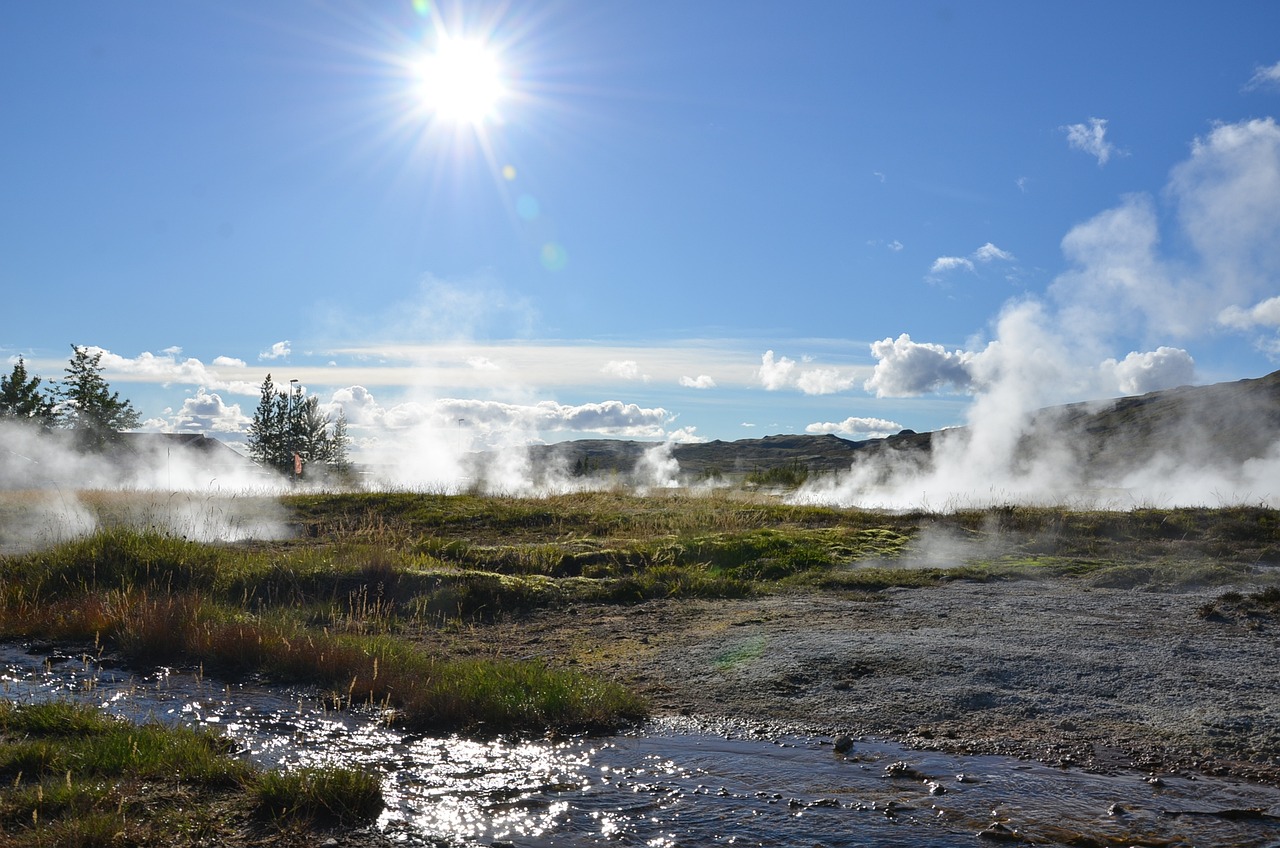
Financial Considerations
Transitioning to green energy isn't just about the technology; it's also heavily influenced by . The shift towards renewable sources of energy, while essential for a sustainable future, often comes with a hefty price tag. High initial costs can deter investors and stakeholders from committing to green projects. However, understanding the financial landscape can help in navigating these challenges. Did you know that despite the initial investment, renewable energy can lead to significant long-term savings? It's like buying a high-efficiency washing machine: the upfront cost is higher, but the savings on your utility bills over time can be substantial.
One of the major hurdles in financing green energy projects is the market volatility. The energy market can fluctuate wildly, making it difficult for investors to predict returns on their investments. To mitigate this risk, many organizations are turning to a range of funding options. These can include private investments, public funding, and innovative financing models such as green bonds. It's crucial for stakeholders to be aware of these options because they can significantly reduce the financial burden associated with transitioning to renewable energy.
Furthermore, government support plays a pivotal role in overcoming financial barriers. Various incentives are available that can help offset initial costs. For instance, tax credits and subsidies can make renewable energy projects much more appealing. Here’s a quick look at some common incentives:
| Incentive Type | Description |
|---|---|
| Tax Credits | Reductions in tax liability for investments in renewable energy technologies. |
| Grants | Direct funding from government or organizations to support renewable energy projects. |
| Subsidies | Financial assistance to lower the cost of renewable energy technologies for consumers. |
In addition to these incentives, the role of financial institutions is critical. Banks and investment firms are increasingly recognizing the importance of sustainable investments. They are beginning to offer favorable loan terms for projects that focus on green energy. This shift in the financial landscape is encouraging more businesses and individuals to consider renewable energy options.
Ultimately, while the financial considerations of transitioning to green energy can be daunting, they are not insurmountable. With the right strategies, support systems, and awareness of available resources, the path to a sustainable energy future can become clearer and more achievable. As we continue to innovate and adapt, the financial barriers that once seemed insurmountable will gradually fade, paving the way for a greener planet.
- What are the main financial barriers to green energy? High initial costs, market volatility, and lack of access to funding can be significant obstacles.
- How can government incentives help? They can reduce the financial burden through tax credits, grants, and subsidies, making renewable projects more viable.
- What is the role of financial institutions? Banks and investment firms are increasingly providing favorable terms for loans related to green energy projects.
- Are there long-term savings associated with green energy? Yes, although the initial investment may be high, renewable energy sources can lead to significant savings on utility bills over time.
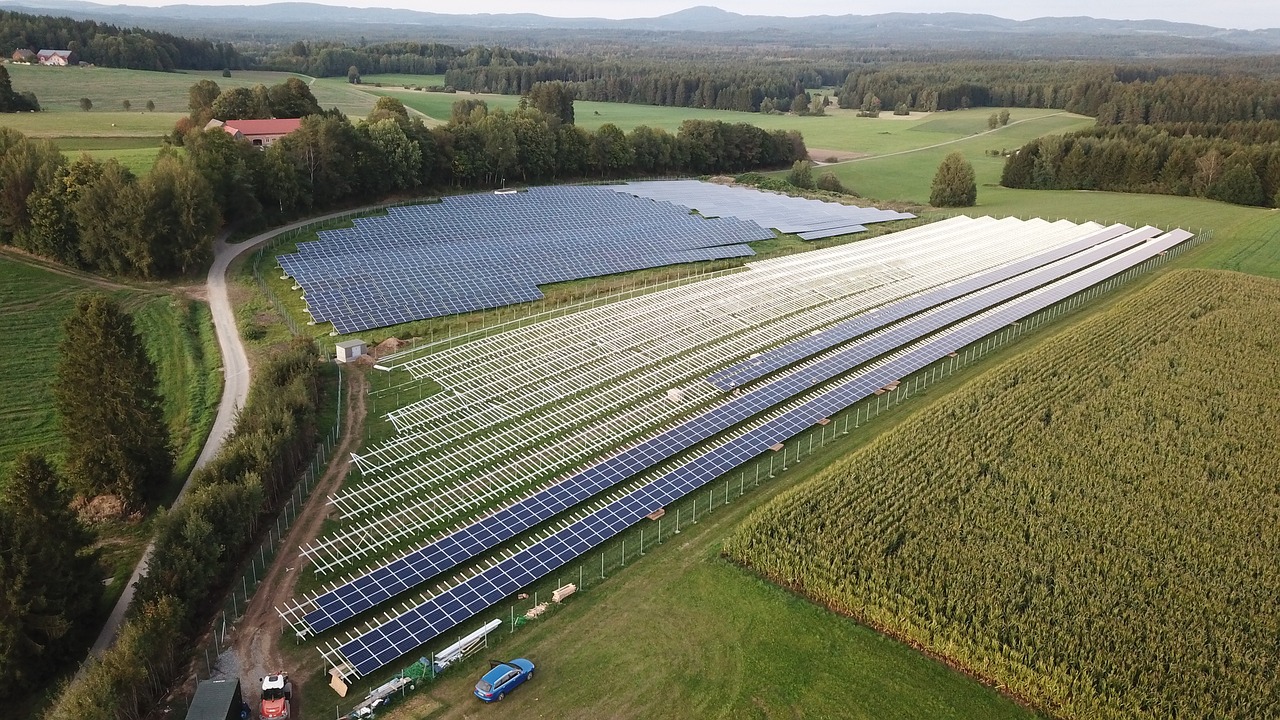
Policy and Regulatory Framework
The transition to green energy is not just about technology and investment; it’s also significantly influenced by the that governs energy production and consumption. Governments around the world play a crucial role in shaping the landscape for renewable energy through legislation, incentives, and regulations designed to promote sustainable practices. This framework can either propel the shift toward green energy or act as a stumbling block, depending on how effectively it is designed and implemented.
One of the most important aspects of a robust regulatory framework is the establishment of clear and consistent policies. When policies are ambiguous or frequently changing, it creates uncertainty for investors and developers, making them hesitant to commit resources to renewable projects. For instance, a sudden change in tax credits or subsidies can derail projects that rely on these incentives for financial viability. Therefore, a stable policy environment is essential for fostering long-term investments in green technologies.
In addition to stability, policies must also be ambitious and forward-thinking. Countries that set clear targets for renewable energy adoption, such as committing to achieve a certain percentage of energy from renewable sources by a specific year, create a sense of urgency and direction. This can lead to increased innovation and competition in the sector. For example, the European Union has set ambitious goals for reducing carbon emissions, which has spurred member states to invest heavily in renewable energy solutions.
Moreover, incentives for renewable energy play a pivotal role in encouraging both businesses and individuals to adopt sustainable practices. These can include:
- Tax credits for solar panel installations
- Grants for community renewable energy projects
- Feed-in tariffs that guarantee a fixed payment for energy produced from renewable sources
Such incentives not only make renewable energy more accessible but also help to level the playing field against traditional fossil fuels, which often benefit from longstanding subsidies.
Furthermore, international cooperation is becoming increasingly vital in the realm of energy policy. Climate change knows no borders, and therefore, countries must collaborate to share technology, knowledge, and best practices. International agreements, such as the Paris Agreement, set a framework for nations to work together toward common goals. These agreements often include commitments to reduce greenhouse gas emissions and promote renewable energy, thereby creating a unified approach to the global energy crisis.
To summarize, an effective policy and regulatory framework is essential for the successful transition to green energy. It requires a combination of stability, ambition, and cooperation. By implementing clear policies, providing robust incentives, and fostering international collaboration, governments can create an environment that not only supports but accelerates the shift to a more sustainable energy future.
Q: What role do government policies play in the transition to green energy?
A: Government policies are critical as they provide the necessary framework, incentives, and regulations that encourage the adoption of renewable energy technologies.
Q: How do incentives affect renewable energy investment?
A: Incentives, such as tax credits and grants, reduce the financial burden on developers and consumers, making renewable energy projects more attractive and feasible.
Q: Why is international cooperation important for green energy?
A: Climate change is a global issue that requires collective action. International cooperation allows countries to share resources, technologies, and strategies to promote sustainable energy practices effectively.

Incentives for Renewable Energy
When it comes to transitioning to green energy, one of the most effective ways to encourage adoption is through government incentives. These incentives act as a catalyst, making renewable energy projects more financially viable and attractive to both businesses and individuals. Imagine trying to climb a steep hill; without the right gear, it can feel impossible. Incentives are like that gear, providing the necessary support to help us navigate the challenging terrain of energy transformation.
Various incentive programs exist to stimulate investment in green technologies, and they can take many forms. For instance, tax credits allow homeowners and businesses to deduct a portion of their renewable energy installation costs from their taxable income, effectively lowering the overall expense. Similarly, subsidies can reduce the upfront costs for solar panels, wind turbines, and other renewable installations, making them more accessible to a broader audience.
In addition to tax credits and subsidies, there are also grants available for research and development in renewable energy technologies. These grants can help innovators push the boundaries of what's possible, leading to breakthroughs that can further reduce costs and improve efficiency. For example, a recent grant program funded research into advanced battery technologies, which could revolutionize energy storage solutions.
Moreover, net metering is another powerful incentive that allows homeowners with solar panels to sell excess energy back to the grid. This not only helps individuals offset their energy costs but also encourages more people to invest in renewable energy systems. It’s a win-win situation where both the homeowner and the community benefit from cleaner energy.
To illustrate the impact of these incentives, consider the following table that highlights some common incentive programs across different regions:
| Incentive Type | Description | Example Regions |
|---|---|---|
| Tax Credits | Reduces taxable income based on renewable energy investments. | USA, Canada, Germany |
| Subsidies | Direct financial support to reduce installation costs. | Australia, UK, Japan |
| Grants | Funding for research and development in green technologies. | European Union, USA |
| Net Metering | Allows energy producers to sell excess energy back to the grid. | USA, Australia |
These incentives are not just beneficial; they are essential for creating a sustainable energy future. They help to level the playing field, allowing renewable energy sources to compete with traditional fossil fuels. The more we can incentivize green energy, the faster we can reduce our carbon footprint and combat climate change. So, the next time you hear about government incentives for renewable energy, remember that they are not just financial tools; they are the keys to unlocking a cleaner, greener future for all of us.
- What types of incentives are available for renewable energy? There are various types, including tax credits, subsidies, grants, and net metering programs.
- How do tax credits work? Tax credits allow you to deduct a certain percentage of your renewable energy installation costs from your taxable income.
- Can I sell excess energy back to the grid? Yes, through net metering programs, you can sell excess energy generated from your renewable sources back to the grid.
- Are these incentives available in all regions? While many countries have similar programs, the specifics can vary widely by region, so it's essential to check local regulations.

International Cooperation
When it comes to tackling the monumental challenge of climate change and transitioning to green energy, is not just beneficial; it’s absolutely essential. The reality is that climate change knows no borders. A problem that affects one nation inevitably impacts others, making it crucial for countries to work together. Think of it like a global team sport where every player has to contribute to win the game. The stakes are high, and the need for collaboration has never been more urgent.
One of the most significant frameworks for international cooperation is the Paris Agreement, which aims to unite the world in combating climate change and accelerating the transition to sustainable energy. Countries that are part of this agreement have committed to reducing greenhouse gas emissions and limiting global warming to well below 2 degrees Celsius. This common goal fosters a sense of shared responsibility and urgency among nations, pushing them to innovate and invest in renewable energy technologies.
Moreover, international partnerships can take many forms. They can range from bilateral agreements between two countries to larger coalitions like the International Renewable Energy Agency (IRENA), which promotes the adoption of renewable energy worldwide. Such organizations not only facilitate knowledge sharing and technology transfer but also help in mobilizing financial resources. For instance, many developing nations lack the funds to invest in green technologies, and international cooperation can provide the necessary financial backing through grants and loans.
Additionally, global forums such as the United Nations Climate Change Conference (COP) serve as platforms for nations to negotiate and collaborate on climate action. These conferences are vital for assessing progress and setting new targets. They create an environment where countries can share best practices, discuss challenges, and explore innovative solutions together. It’s akin to a global brainstorming session where everyone brings their unique ideas to the table, leading to more comprehensive and effective strategies.
However, international cooperation is not without its challenges. Differences in political priorities, economic capabilities, and cultural perspectives can create friction. For example, while some countries may prioritize immediate economic growth, others might focus on long-term sustainability. Bridging these gaps requires not just diplomacy but also a commitment to understanding and respecting each nation’s unique circumstances.
To summarize, international cooperation is a cornerstone of the green energy transition. It enables countries to pool their resources, share knowledge, and innovate together. As we face the daunting challenges of climate change, it’s clear that no single nation can tackle this issue alone. By working together, we can create a more sustainable future for all. After all, when we unite our efforts, we amplify our impact, turning individual sparks of change into a roaring flame of global progress.
- Why is international cooperation important for green energy? International cooperation allows countries to share resources, knowledge, and technology, which is vital for addressing global climate challenges.
- What is the Paris Agreement? The Paris Agreement is a landmark international treaty that aims to limit global warming and promote sustainable energy practices among participating countries.
- How can developing countries benefit from international cooperation? Developing countries can gain access to financial resources, technology transfers, and expertise that enable them to invest in renewable energy solutions.
- What role do global forums play in climate action? Global forums facilitate dialogue, negotiation, and collaboration among nations, helping to assess progress and set new targets for climate action.
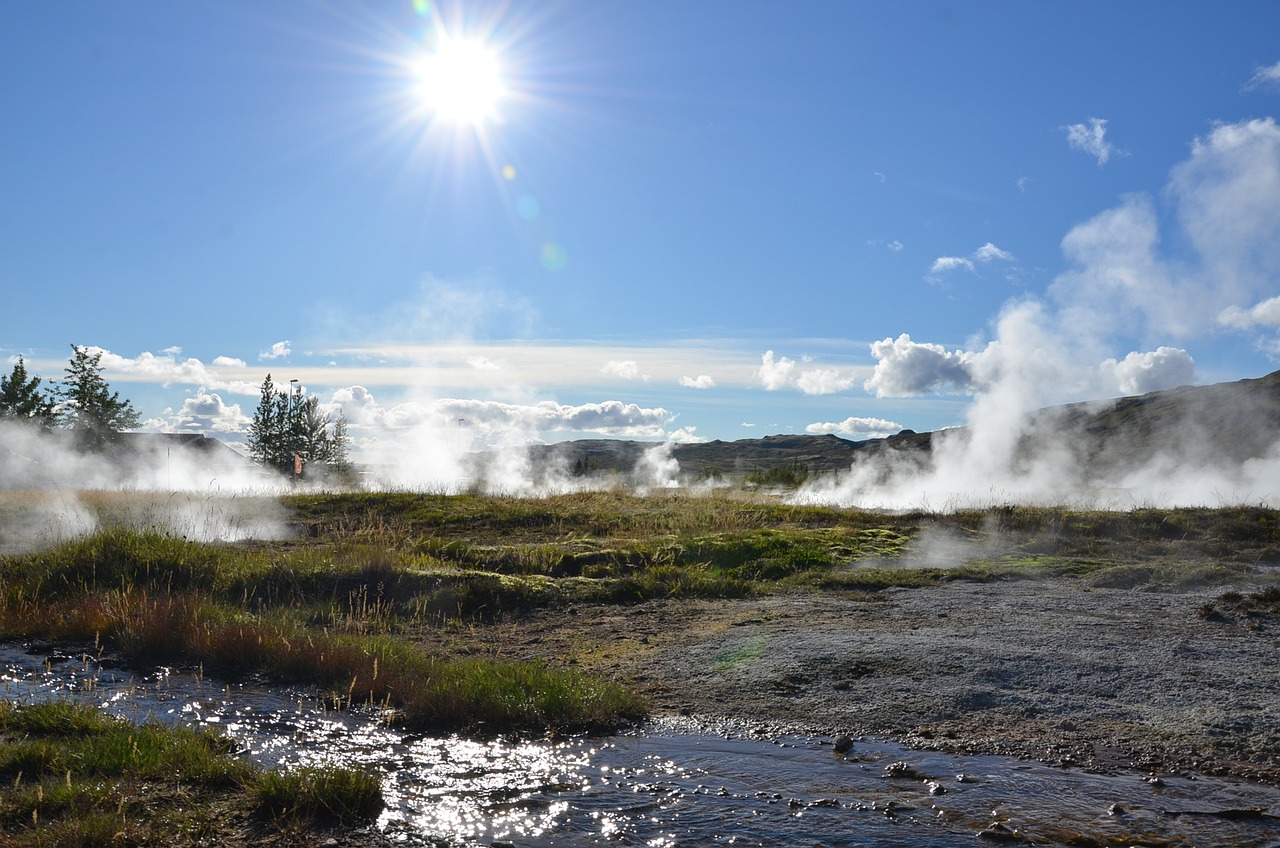
Public Awareness and Education
Raising public awareness and understanding of green energy is critical for its acceptance and implementation in our daily lives. Imagine living in a world where everyone is not only aware of the benefits of renewable energy but is also actively participating in its adoption. This vision can become a reality through effective education and outreach programs that inform individuals about the advantages of switching to sustainable energy sources. But how do we get there?
First, we need to recognize that knowledge is power. When people understand how green energy works, its benefits, and its potential to combat climate change, they become more likely to support and engage in sustainable practices. Educational initiatives can take many forms, from community workshops to online courses, all aimed at demystifying renewable energy technologies and their applications. For instance, a community might host a series of workshops where experts explain how solar panels work, the importance of wind energy, or how to reduce energy consumption at home.
Moreover, engaging local communities in green energy initiatives can significantly enhance support and participation. Community-driven projects often serve as a catalyst for wider acceptance of renewable energy. When individuals see their neighbors participating in sustainable practices, they are more likely to join in. For example, a neighborhood might come together to install solar panels on a community center, creating a visible example of the benefits of green energy. This not only provides a practical demonstration but also fosters a sense of community and shared responsibility.
Additionally, educational programs focused on renewable energy can empower individuals and organizations. Schools can integrate sustainability into their curricula, teaching students about the science behind renewable energy and its impact on the environment. This not only equips the next generation with the knowledge they need to make informed decisions but also encourages a culture of sustainability that can permeate through families and communities. By fostering an environment where young people are excited about green technologies, we can ensure a brighter, more sustainable future.
To further illustrate the importance of public awareness and education, consider the following table that outlines the key benefits of educational initiatives in promoting green energy:
| Benefit | Description |
|---|---|
| Informed Decision-Making | Individuals can make better choices about energy consumption and investments in renewable technologies. |
| Community Engagement | Increased participation in local sustainability initiatives fosters a sense of ownership and responsibility. |
| Job Creation | Education programs can lead to new job opportunities in the green energy sector as demand for skilled workers rises. |
| Behavioral Change | Awareness can lead to changes in personal habits that contribute to energy conservation. |
In conclusion, the transition to green energy is not just about technology or policy; it’s about people. By investing in public awareness and education, we can create a society that values and actively participates in sustainable practices. The more informed we are, the more empowered we become to take action for a healthier planet. So, let’s roll up our sleeves and start the conversation about green energy today!
- What is green energy? Green energy refers to renewable energy sources that are environmentally friendly and sustainable, such as solar, wind, and hydroelectric power.
- Why is public awareness important for green energy? Public awareness is crucial as it encourages individuals to adopt sustainable practices and support renewable energy initiatives, leading to a greater collective impact.
- How can I get involved in green energy initiatives? You can participate by attending local workshops, supporting community projects, or educating yourself and others about renewable energy technologies.

Community Engagement
Community engagement is a vital aspect of the transition to green energy. When local communities become actively involved in sustainable initiatives, the chances of success increase dramatically. Why is this engagement so crucial? Well, think of it as the foundation of a house: without a solid base, everything built on top can crumble. Engaging communities ensures that the transition to green energy is not just a top-down approach but rather a collaborative effort that resonates with the people it affects the most.
One of the most effective ways to foster community engagement is through educational programs. These initiatives can help demystify green energy technologies, making them accessible and understandable. When people grasp the benefits of renewable energy, they are more likely to support and participate in local projects. For instance, workshops that teach residents about solar panel installation or wind turbine maintenance can empower them to contribute actively to the green energy movement.
Moreover, successful community-driven projects often serve as shining examples of what can be achieved when people come together. Consider community solar gardens, where neighbors pool resources to invest in solar panels. These projects not only reduce energy costs but also strengthen community bonds. When individuals see their neighbors benefiting from renewable energy, it creates a ripple effect, inspiring others to join the cause. This collective enthusiasm can lead to a culture of sustainability that extends beyond energy use, influencing other aspects of community life.
In addition to educational initiatives, it’s important to create platforms for ongoing dialogue. Town hall meetings, online forums, or social media groups can facilitate discussions about local energy needs and sustainability goals. By giving residents a voice, communities can tailor their green energy strategies to reflect their unique circumstances and values. This approach not only enhances participation but also fosters a sense of ownership over the projects, making people more likely to invest their time and resources into their success.
To illustrate the impact of community engagement in green energy, let’s take a look at some successful case studies:
| Project Name | Location | Key Features | Impact |
|---|---|---|---|
| Solarize | Various U.S. Cities | Group purchasing of solar panels | Increased solar installations by 300% in participating communities |
| Wind for Schools | Multiple States | Educational wind turbine projects in schools | Raised awareness and interest in renewable energy among students |
| Community Choice Aggregation | California | Local control over energy sourcing | Increased renewable energy use by 50% in participating areas |
In conclusion, community engagement is not just beneficial; it is essential for the successful transition to green energy. By fostering education, creating platforms for dialogue, and showcasing successful projects, communities can harness their collective power to drive sustainable change. As we move forward, let’s remember that every small effort counts. After all, when communities unite for a common cause, the potential for transformation is boundless.
- What is community engagement in green energy? Community engagement involves involving local residents in the planning, implementation, and support of renewable energy projects to ensure they meet the needs and values of the community.
- How can I get involved in local green energy initiatives? You can participate by attending local meetings, joining community groups focused on sustainability, or volunteering for educational programs that promote green energy.
- What are some successful examples of community engagement? Projects like community solar gardens and educational wind turbine programs in schools have successfully engaged communities and increased awareness of renewable energy.

Educational Programs
In today’s fast-paced world, the importance of focused on renewable energy cannot be overstated. These programs serve as the backbone for empowering individuals and communities with the knowledge and skills needed to embrace green technologies. Imagine walking into a classroom where the excitement is palpable, and students are not just learning about energy but are actively participating in projects that could change the world. This is the essence of modern educational initiatives aimed at promoting green energy.
Educational programs can take many forms, from university degree courses to community workshops. Universities are stepping up by offering specialized courses in renewable energy engineering, environmental science, and sustainable development. These programs not only equip students with theoretical knowledge but also provide hands-on experiences through internships and research opportunities. For instance, students might work on real-world projects like designing solar panels or developing wind turbine technology, bridging the gap between theory and practice.
Moreover, community-based educational initiatives play a crucial role in raising awareness about green energy. Workshops and seminars can be organized to engage local residents, informing them about the benefits of renewable energy sources. By demystifying concepts like solar energy or wind power, these programs can empower communities to make informed decisions about energy consumption and sustainability practices. Knowledge is power, and when communities understand the implications of their energy choices, they are more likely to adopt sustainable practices.
One innovative approach to education is the use of online platforms. With the rise of e-learning, individuals from all walks of life can access courses on renewable energy at their convenience. This flexibility allows for a broader audience, including those who may not have the opportunity to attend traditional classes. Online courses can cover a variety of topics, such as:
- Solar energy systems and installation
- Energy efficiency practices
- Wind energy technology
- Hydroelectric power fundamentals
Additionally, partnerships between educational institutions and businesses can enhance these programs. By collaborating with companies that focus on green technologies, schools can provide students with insights into real-world applications and the latest industry trends. This not only enriches the learning experience but also helps students build networks that could be beneficial for their careers.
In summary, educational programs are essential for fostering a culture of sustainability and promoting the transition to renewable energy. By equipping individuals with the necessary knowledge and skills, we can create a generation that is not only informed but also passionate about making a difference in the fight against climate change. The more we invest in education, the brighter our future becomes, paving the way for a healthier planet.
Q1: What types of educational programs are available for learning about green energy?
A1: There are various educational programs available, including university degrees, online courses, workshops, and community seminars focused on renewable energy technologies.
Q2: How can community involvement enhance educational programs on green energy?
A2: Community involvement can enhance educational programs by fostering local support, encouraging participation, and ensuring that the programs address the specific needs and interests of the community.
Q3: Are online educational programs effective for learning about renewable energy?
A3: Yes, online educational programs can be highly effective as they offer flexibility and access to a wide range of resources and expertise, making it easier for individuals to learn at their own pace.
Frequently Asked Questions
-
What is green energy?
Green energy refers to renewable energy sources that are environmentally friendly, such as solar, wind, and hydroelectric power. These energy forms are sustainable and have a minimal impact on the environment, making them crucial for a healthier planet.
-
What are the main challenges in transitioning to green energy?
The transition to green energy faces several challenges, including technological barriers, financial considerations, and regulatory hurdles. These obstacles can hinder the adoption of renewable energy sources and require innovative solutions and supportive policies to overcome.
-
How important is energy storage in green energy?
Energy storage is vital for balancing supply and demand in renewable energy systems. Technologies like batteries and pumped hydro can enhance the reliability of green energy by storing excess energy generated during peak production times for use when demand is high.
-
What role do government incentives play in promoting renewable energy?
Government incentives, such as tax credits and subsidies, are crucial for encouraging investments in renewable energy technologies. These financial supports can lower the initial costs of green projects and stimulate market growth, making sustainable energy solutions more accessible.
-
How can communities engage in green energy initiatives?
Communities can engage in green energy initiatives through local projects that promote sustainability. Successful community-driven efforts often include solar panel installations, wind farms, or educational programs that raise awareness and foster participation in renewable energy practices.
-
Why is public awareness important for green energy adoption?
Public awareness is essential for the acceptance of green energy solutions. By educating individuals and communities about the benefits of renewable energy, we can foster a culture of sustainability and encourage more people to support and participate in green initiatives.
-
What are some examples of educational programs focused on renewable energy?
Educational programs on renewable energy can include workshops, online courses, and school curricula that teach about green technologies and their benefits. These initiatives aim to empower individuals and organizations with the knowledge and skills needed to embrace sustainable energy practices.



















